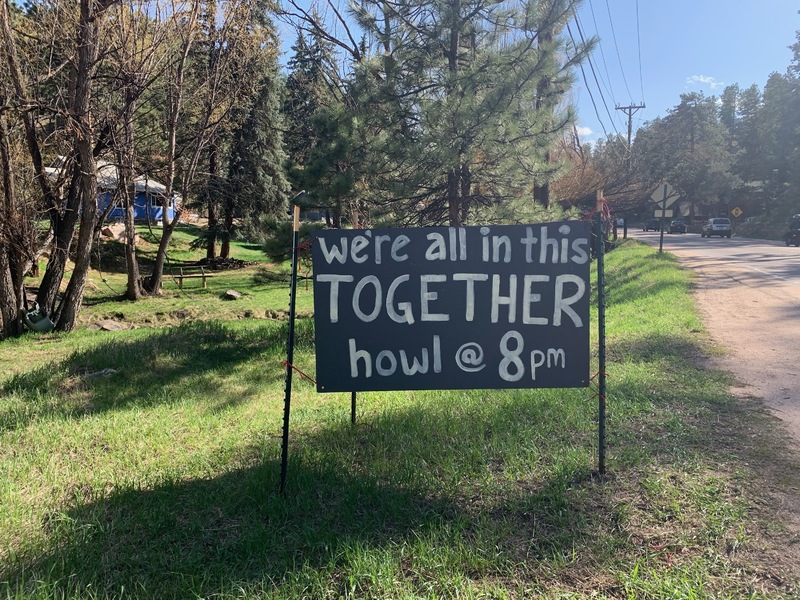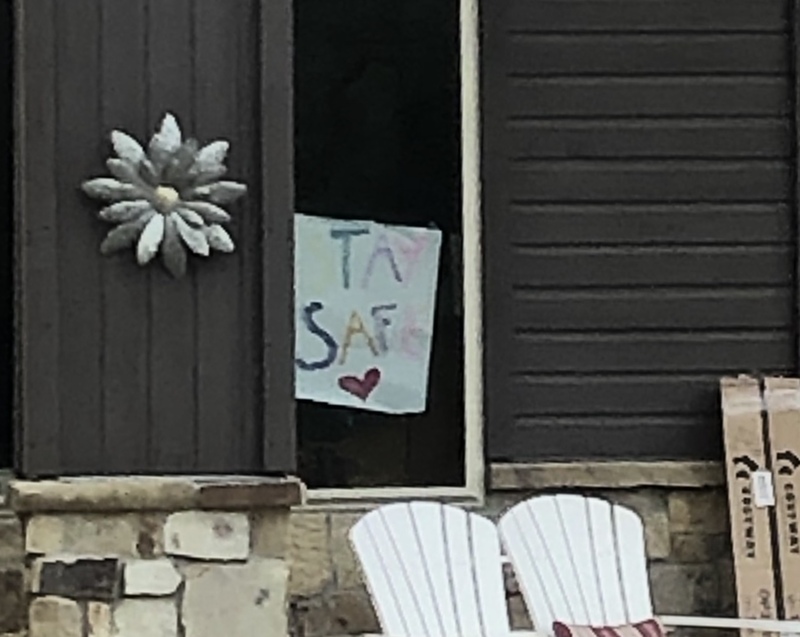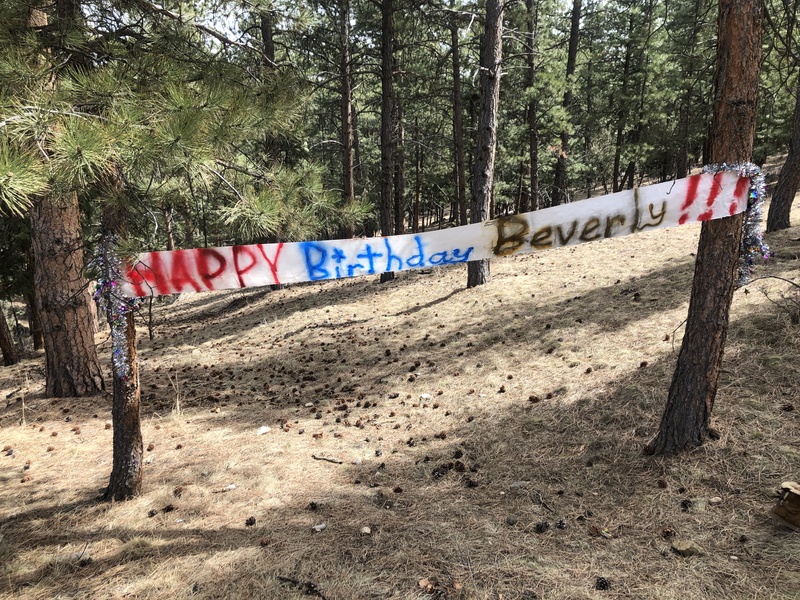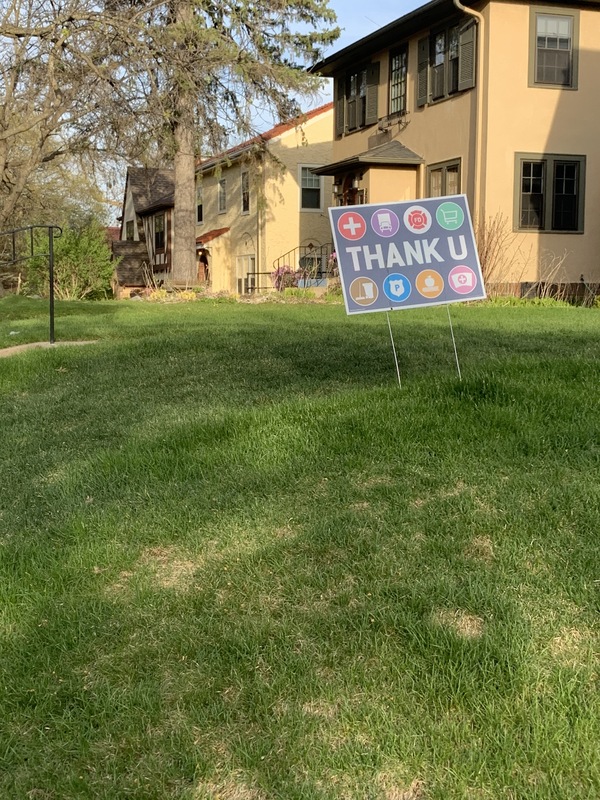Community Interaction
Alex Westrick, Libby Peterson, and Rose Nadelhoffer
Traditions of Community Interaction During the Coronavirus Epidemic
Introduction
As the coronavirus pandemic continues to ravage American healthcare systems and the national economy, states face extended stay-at-home orders and many of us struggle with the repercussions of quarantine. To cope with these strange circumstances, communities throughout the United States adopt new practices of environmental and social interaction. Some of these practices are unique to one’s geographical location, but others are common in communities nationwide. Regardless of location, most interactions propagate positivity between individuals and are essential to maintaining a feeling of solidarity as Americans collectively struggle through hardships prompted by COVID-19. We observed unique interactions taking place in three distinct spheres: within our own neighborhoods, throughout our greater communities, and in the natural environment.
New practices of interaction within neighborhoods
Quarantine is characterized by restrictions on physical gatherings, which largely impacts the interactions of individuals living in close proximity. As neighbors are unable to interact in person, they attempt to alleviate feelings of loneliness and isolation by physically communicating at a distance. Alex Westrick recalls seeing masked neighbors talking six feet apart in a front yard in Ashland, Oregon, and this trend of distanced gathering seems to be relevant in cities throughout the U.S. COVID-19 thus forces new customs of physical body language in communications as neighbors talk at a distance in an attempt to social distance. Interestingly, neighbors also “communicate” at a distance solely through sound by going outside and howling like wolves. This nightly ritual is widespread throughout the U.S. and originated as a way of thanking healthcare workers and first responders for their sacrifices during the coronavirus epidemic. It has evolved into an outlet for people to vocalize their frustration in cacophonous solidarity with their neighbors, and in Evergreen and Ashland Rose Nadelhoffer and Alex Westrick’s neighborhoods erupt in howls and fireworks bangs at 8 pm. As the Italians sang on balconies, Americans howl to disturb the quietness of stalled neighborhoods and towns and promote positivity and togetherness from afar within their communities. The appearance of uplifting messages written on posters and banners, either for special occasions, like birthdays, or to thank healthcare workers and first responders, or just to remind our neighbors to stay healthy and safe is another new phenomenon in neighborhoods. Because we are out and about in our neighborhoods more, we are spreading positivity through our neighborhoods.
New practices of interaction within greater communities
Though the shelter-in-place order extends throughout the country and isolates individuals from their everyday lives and communities, essential workers have no choice but to interact with each other. Many stores have limited the number of people inside or omitted that option altogether, making curb-side pick-up and home delivery a popular option for customers who are self-isolating. As local businesses have been the hardest hit by the recent events, communities have made it a point to support those that are still open for business. Essential worker Libby Peterson who works in a local bakery/breakfast eatery has noticed many changes since the quarantine order has been in place (and now extended to May 18th) in her hometown of Minneapolis. Due to cut hours and staff at her job she has been missing many of her fellow staff members at work and sympathizes with those who are struggling to make ends meet, especially kitchen workers, since there is only one cook on at a time compared to the usual three or four. Though business has been more limited without people dining in, there is still a steady stream of customers looking to support locals. Some people are much friendlier than others, asking how business is going and giving extremely generous tips on their orders, while some are frightened and seem to be in a hurry to get back to the safety of their own homes. More and more people going out to buy necessities have been wearing masks and gloves to protect themselves from the virus as well. As winter turns to summer in Minnesota, the sunshine brings more business, as people are outside throughout the day having picnics and spending time with immediate family.
While many individuals take a positive approach to health precautions, there are distinct groups throughout the country which disregard scientific evidence about COVID-19 and intentionally break social-distancing and mask-wearing mandates. Alex Westrick encounters small groups of protestors in downtown Ashland and outside grocery stores demanding to “reopen Oregon”. A small but very vocal segment of the Ashland population also believe that the novel coronavirus is spread at least in part by 5G networks, which some claim make people more susceptible by weakening immune systems, and others claim spread the virus directly. Alex recalls running into an old friend on a hiking trail in late April whose parents told them everyone should actually be hugging more in order to boost their immune systems. Just as hope and safe advice spread through neighborhoods, cities, and online, so does misinformation. Given all the uncertainty and frustration, people who don’t know what to trust are turning to questionable sources of information.
Increased Environmental Interaction
Many of us in class have actually noticed more people than usual enjoying outdoor spaces, both for better and for worse. Rose went on a bike ride with her family and noticed more people on the trails than usual, and Libby has noticed people crowding outdoor public spaces like parks. Alex found herself encountering a lot more people than usual on her mountain biking route and has been going on new trails and seeing people as well. Now that people have the chance to be outdoors more because of their jobs or classes being conducted remotely, they’re taking advantage of that. On Ashland trails right now, people have created and collectively contributed to little positive clusters of painted rocks, encouraging messages, and little pieces of art to promote unity and hope in the community. One positive potential outcome of the sheltering in place would be for people to leave with more appreciation for their environments and hopefully keep going on walks and hikes and maybe even have a stronger desire to protect and care for those spaces. For some, like Rose and Alex, those spaces are hiking and biking trails in wooded areas. For others like Libby who live in more urban locations, that could mean green spaces and public parks. We hope that people continue to use their environments to connect with each other and spread hopeful and encouraging messages.
Conclusion
Despite necessary measures taken in effort to control the virus, individuals and communities alike have been able to connect and enjoy themselves in the midst of self-isolation. We have found that our differing communities share many similarities in coping with the repercussions of the virus, whether that be engineering creative ways to converse with neighbors and friends, supporting local businesses, or getting outside to enjoy emerging summer weather and time with loved ones. These positive interactions are essential in creating communal practices that reinforce the normality of social-distancing. Of course, not all reactions to this new lifestyle are positive, however negative ideas do not compare to the amount of hopeful messages being spread throughout the US. Advocacy for these positive community traditions ensures protection of the health and safety of our community members, support for healthcare workers and hospitals, and most importantly aids in the country’s struggle to combat the novel Coronavirus.




